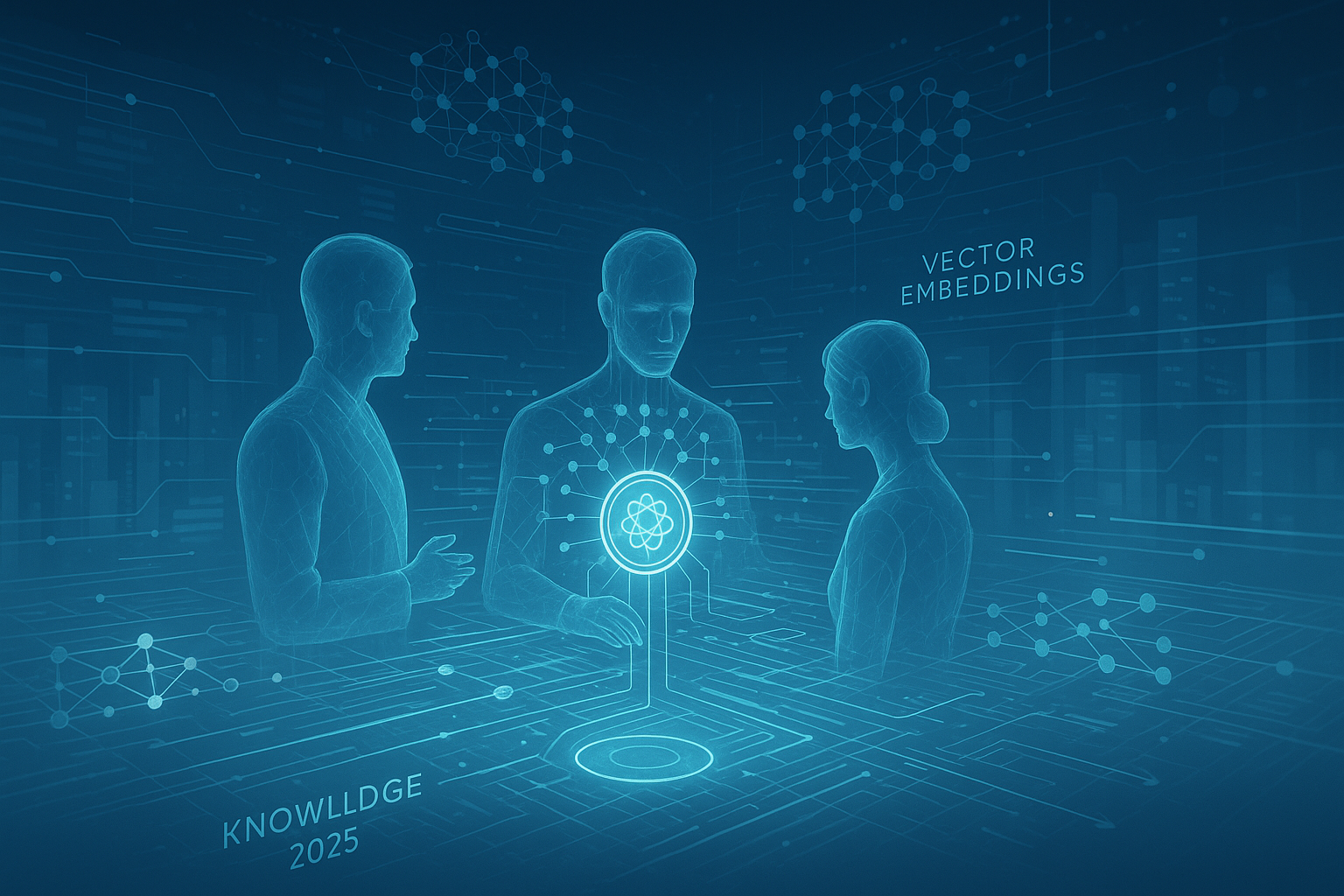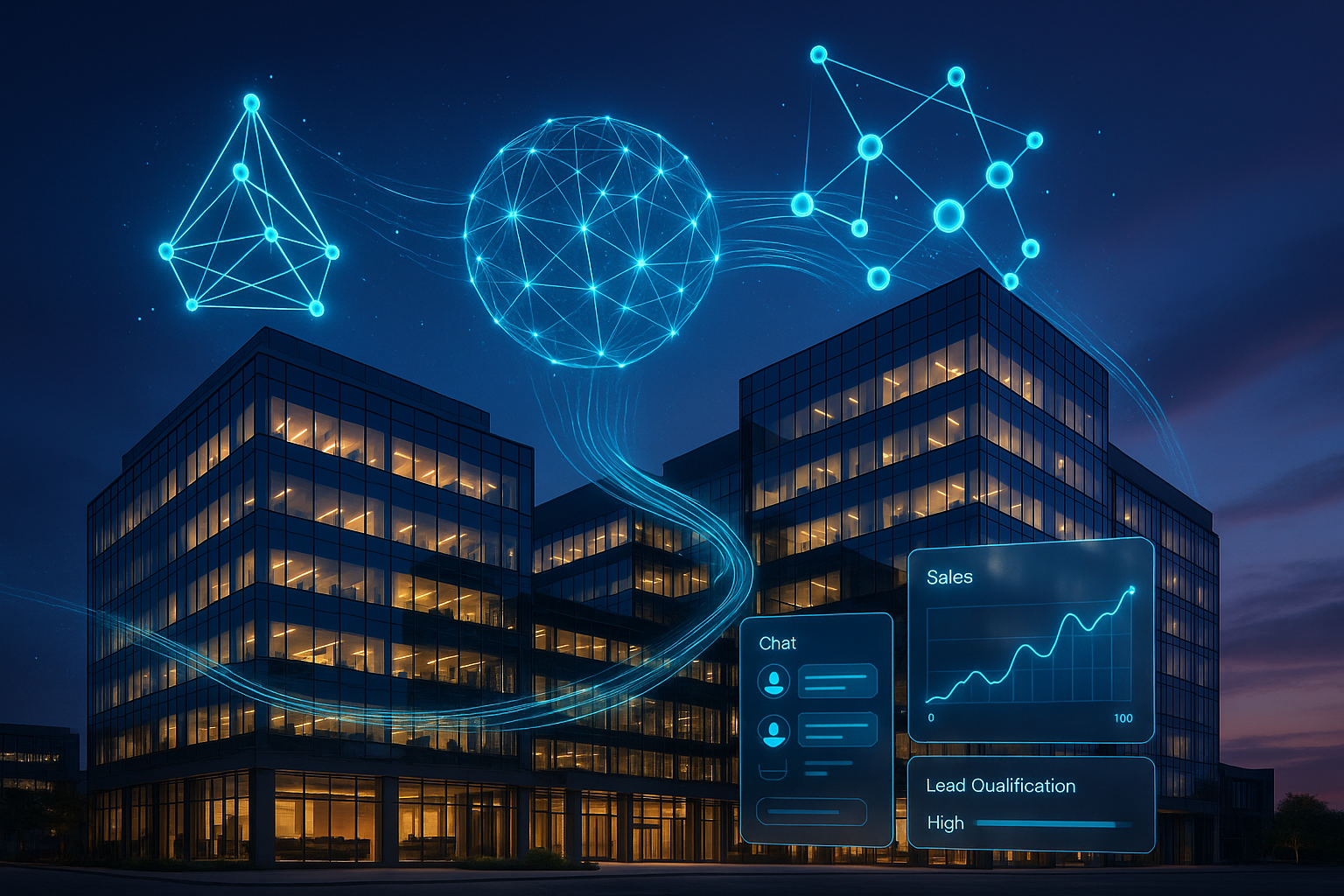
Retrieval-Augmented Generation (RAG) in 2025: Innovations, Architecture, Adoption, and Frameworks
Caiyman.ai Research Team
AI Solutions Architect
2025 marks a turning point for Retrieval-Augmented Generation (RAG), redefining what’s possible for enterprise AI with breakthroughs in architecture, integration, and scale. Whether you’re a technical leader or innovator, understanding RAG’s rapid evolution—especially agentic RAG, enterprise penetration, and the thriving ecosystem of frameworks—is essential for future-proofing your AI strategy.
Why 2025 Is a Defining Year for Retrieval-Augmented Generation (RAG)
In just a year, RAG has leaped from niche tool to a foundational pillar for deploying intelligent, up-to-date, and contextually aware language model solutions. This surge is fueled by mass adoption in industries like healthcare, legal, finance, and customer service, matched by an explosion in technical innovation—especially the advent of agentic RAG and robust, production-ready frameworks (Glean, 2025; Athina AI Hub). 2025’s breakthroughs are not just about bigger models, but about smarter, interconnected agents, seamless domain adaptation, and a mature ecosystem driving measurable ROI.
This article unpacks how RAG works, what’s new in 2025, enterprise adoption patterns, framework options, and proven best practices—so you can make informed decisions in this hyper-competitive space.
RAG Fundamentals: How Retrieval-Augmented Generation Works
Retrieval-Augmented Generation (RAG) is a hybrid AI paradigm that pairs LLMs with external retrieval systems, enabling AI applications to ground responses in current, authoritative knowledge rather than relying solely on static model weights. The core architecture consists of two symbiotic components:
- Retrievers: Embedding models and vector stores (e.g., FAISS, Pinecone) that encode queries and documents, identify semantically relevant chunks from external data sources, and optimize search strategies.
- Generators: Transformer-based LLMs (like GPT, BART) that synthesize new text by conditioning outputs on both the user query and retrieved context snippets (Glean, 2025).
The workflow is a multi-step process: encode the query, retrieve top-ranked knowledge snippets, and fuse retrieved context with the query for final response generation. This hybrid approach boosts factual accuracy, enables real-time access to new information, and allows domain customization via curated data sources (Eden AI).
Yet as adoption surges, basic RAG’s limits—such as shallow reasoning and retrieval errors—prompted a new wave of innovation for 2025.
2025 RAG Innovations: Agentic Architectures, Integration Strategies, and Performance Leaps
Major 2025 advances redefine RAG’s boundaries by introducing agentic, multi-agent workflows and highly integrated retrieval–generation loops.
Agentic RAG: Autonomous Agents Elevate Retrieval and Generation
Agentic RAG moves beyond traditional “retriever→generator” pipelines by assigning specialized AI agents to manage retrieval, validation, planning, and orchestration. For instance:
- Retriever agents iteratively refine search queries and sources for comprehensive coverage.
- Evaluator agents cross-check and validate retrieved content, reducing hallucination risk.
- Planners/orchestrators manage multi-hop reasoning and workflow decomposition (Athina AI Hub).
This architecture enables sophisticated query decomposition, nuanced legal/medical reasoning, and robust content validation—driving higher reliability and unlocking richer insights, especially in regulated or complex settings (OneSky, 2025).
Integration and Performance Advances
2025’s RAG systems feature bidirectional, dynamic interfaces where retrieval informs generation—and vice versa—through iterative loops and multi-agent orchestration. Innovations include:
- Bi-directional retrieval/generation feedback using reinforcement learning and dynamic query strategies.
- Transformer-based advances: parallel processing, larger context windows (“Long RAG”), and memory-augmented architectures (Glean, 2025).
- Expansion into multilingual, multimodal, and compliance-driven applications, making RAG indispensable for global enterprises (Eden AI).
RAG in the Enterprise: Adoption Trends, Use Cases, and Industry Impacts
RAG implementation has skyrocketed: according to Market.us, large enterprises now account for 72% of RAG deployments, with the market expected to grow at a 49% CAGR. Industries leading the charge—like healthcare, finance, and legal—leverage RAG for:
- Healthcare: Multi-agent RAG systems retrieve the latest studies, guidelines, and patient records, supporting personalized, up-to-date clinical decisions. Validation agents ensure accuracy (Grand View Research).
- Legal Analysis: Adaptive RAG sifts through statutes and case law, synthesizing context-relevant recommendations and enabling automated compliance checks.
- Customer Service: AI assistants like Bank of America’s “Erica” have slashed call volumes and response times by up to 70% using retrieval-augmented dialogue (Glean, 2025).
- Intelligent Chatbots: RAG-powered bots remember long conversations and self-correct answers for richer user engagement.
Hybrid human-AI oversight and strong compliance features (e.g., audit trails, role-based data access) are now required in high-stakes domains. Still, challenges persist: high integration complexity, data quality disparities, and the need for scalable governance. The push for future-proofing centers on robust security, cloud scalability, and maintainability (B Capital).
Navigating the RAG Framework Ecosystem: Open Source vs Commercial Solutions
With the RAG boom, technical buyers face a crowded marketplace of open source and commercial frameworks. Why does this choice matter? Flexibility, integration, scalability, vendor lock-in risk, and support are all on the line.
Open Source Frameworks: Flexibility and Customization
2025’s leading open source RAG frameworks such as LangChain, Haystack, Mastra, and Kernel Memory support:
- Customizable pipelines, local and cloud deployment, and integration with diverse vector stores/LLMs.
- Rapid experimentation, strong community support, and real-world production pipelines (Signity Solutions).
- Trade-offs: more developer effort for integration and maintenance versus out-of-the box platform capabilities (Medium/Cyprien Arnold).
Commercial RAG Platforms: Enterprise Readiness
Platforms built on managed infrastructure (e.g., Vectara, Pinecone-based services) offer:
- Simplified deployment, built-in compliance/security, SLAs, and robust integrations with enterprise data systems (Pathway).
- Premium support, ongoing feature development, and dedicated onboarding experience.
- Trade-offs: higher upfront costs, potential vendor lock-in, and occasional limitations in custom fine-tuning.
Your decision should consider business fit, infrastructure requirements, regulatory needs, and risk appetite for ongoing innovation and maintenance.
Best Practices and Optimization: Building Effective, Scalable RAG Systems
Retrieval and Generation Optimization
Implementing effective RAG at scale requires optimizing every layer:
- Retrieval: Dense vector search (e.g., Sentence-BERT, Contriever), domain-adaptive pretraining, hard negative mining, and careful chunking maximize recall and accuracy.
- Integration: Concatenation, late fusion, and iterative loops—supported by hardware acceleration and larger context LLMs—enable nuanced, context-rich outputs (Glean, 2025).
Safety, Privacy, and Governance in Production
- Evaluator/fact-checking agents flag inconsistencies, reduce hallucinations, and block toxic or biased output (Athina AI Hub).
- Role-based access, strong encryption, and audit trails are non-negotiable for regulated domains like healthcare and legal (B Capital).
Other proven best practices include:
- Deploying microservices architectures for flexible scaling and resiliency
- Caching and autoscaling pipelines for latency/throughput optimization
- Continuous monitoring, user feedback integration, and A/B testing to refine pipeline performance (Glean, 2025).
Looking Forward: RAG’s Pivotal Role in Next-Gen AI
2025 is a tipping point for Retrieval-Augmented Generation: agentic, multi-agent systems unlock new capabilities; scalable frameworks make enterprise adoption practical; and secure, governable deployments are now standard. For decision-makers, the path forward is clear: invest in advanced RAG architectures, choose frameworks matched to your unique business landscape, and prioritize safety and scalability. The future points to even more sophisticated pipelines—cross-modal integration, self-evolving agents, and seamless human–AI partnership.
Accelerate Your RAG Journey with Caiyman.ai
Ready to harness the power of next-generation RAG in your enterprise? Contact Caiyman.ai for expert architecture, implementation, and consulting on agentic, scalable RAG solutions—and unlock transformative business value today.
Sources
- Top 10 RAG Papers from January 2025 - Athina AI Hub (accessed 2025-05-13)
- What is Retrieval Augmented Generation(RAG) in 2025? - Glean (accessed 2025-05-13)
- The 2025 Guide to Retrieval-Augmented Generation (RAG) - Eden AI (accessed 2025-05-13)
- Retrieval Augmented Generation Market Size Report, 2030 - Grand View Research (accessed 2025-05-13)
- Retrieval Augmented Generation Market Size | CAGR of 49% - Market.us (accessed 2025-05-13)
- RAG and the Future of Intelligent Enterprise Applications - B Capital (accessed 2025-05-13)
- Compare the Top 7 RAG Frameworks in 2025 - Pathway (accessed 2025-05-13)
- 25+ Best Open Source RAG Frameworks in 2025 - Signity Solutions (accessed 2025-05-13)
- Open source RAG solutions: comparison | Medium/Cyprien Arnold (accessed 2025-05-13)
Share this article
Related Articles

AI in PropTech: $3.2B Investment Surge Drives Real Estate Transformation in 2024
Venture capital investment in AI-powered PropTech companies reached a record $3.2 billion in 2024, signaling a fundamental transformation as artificial intelligence evolves from experimental technology to essential operational infrastructure across commercial and residential real estate markets.

AI Sales Agents Transform Real Estate: $4M Uniti AI Funding Signals Industry Revolution
Uniti AI's $4M funding signals a major shift toward AI-powered sales agents in real estate, promising to automate 37% of CRE tasks and deliver $34 billion in efficiency gains by 2030.

LLM-Native AI Sales Agents Transform CRE: $4M Funding Signals Market Revolution in 2025
Uniti AI's $4M funding validates the transformative potential of LLM-native AI sales agents in commercial real estate, offering 24/7 engagement, 60-second response times, and revolutionary automation capabilities.